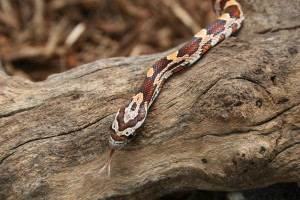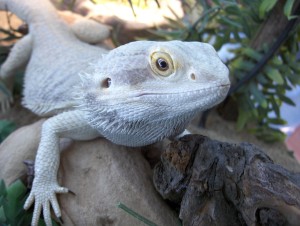It’s hard to believe that summertime is practically over already and school will soon be back in session! For all of you teachers out there, a classroom pet can be a great way to add interest and variety to your lesson plans. Besides keeping the kids entertained and engaged, classroom pets can help to teach responsibility and appropriate pet care techniques. But before we get to the fun part, there are a few important details to examine.
Before You Buy
First and foremost, build yourself a budget! Find out if your school is willing to cover any of the expenses and if not, decide how much you are willing to spend yourself. Make sure you will be able to afford the upfront cost of setting up your classroom pet along with upkeep costs like food, bedding, and possible vet visits. You could also apply for an educational grant from Pets in the Classroom, a nonprofit organization that helps teachers with limited funding.
Next, find out if any of your students have pet related allergies or have a compromised immune system. Allergic reactions to specific animals, bedding, and even their food can be fairly common. By finding out this information before choosing a pet, you can save yourself the hassle of dealing with an unwanted situation later. If your school doesn’t already have guidelines setup for classroom pets, here is a sample school pet policy that may be a helpful resource.
Top 5 Pets
While many “best classroom pets” lists are based around your typical cute & fluffy animals, that may not always be the best way to go. Taking into consideration overall costs, time available for maintenance, and how your students will interact with their classroom pet should be the most important decision makers. The following pets have been chosen based on being low maintenance, easily handleable or strictly hands off, and their overall cost.
Praying Mantis
Estimated Setup Cost: $25 Estimated Monthly Cost: $10
If you’re looking for a great short-term pet with  lots of learning potential, praying mantises are the best way to go! The most common type of mantis kept in classrooms is the Chinese Mantis (Tenodera sinensis). These mantids have a life cycle that lasts about 8 to 12 months from egg to adult, which students can witness in its entirety if your timing is just right. You can usually purchase an ootheca (egg case) from many scientific or educational suppliers between Janurary and June. If you’re lucky enough to live where mantids are in abundance outside, you may even be able to find an unhatched ootheca attached to the branches of a tree or other outdoor plant. Place the egg case in a vented plastic container and keep it in the fridge, this will keep the eggs dormant until you are ready for them to hatch.
lots of learning potential, praying mantises are the best way to go! The most common type of mantis kept in classrooms is the Chinese Mantis (Tenodera sinensis). These mantids have a life cycle that lasts about 8 to 12 months from egg to adult, which students can witness in its entirety if your timing is just right. You can usually purchase an ootheca (egg case) from many scientific or educational suppliers between Janurary and June. If you’re lucky enough to live where mantids are in abundance outside, you may even be able to find an unhatched ootheca attached to the branches of a tree or other outdoor plant. Place the egg case in a vented plastic container and keep it in the fridge, this will keep the eggs dormant until you are ready for them to hatch.
Mantids can be very low cost pets, depending on how you wish to keep them. Plastic deli cups and/ or plastic terrariums are usually the best housing options. Their food will consist of live flies or other feeder insects of various sizes. The only other supplies you need are a spray bottle for drinking water/ humidity, and maybe some feeding tongs too. Mantis care is very simple, just daily feeding and misting with weekly cleaning is really all you need. For more detailed care information, check out the extensive Chinese mantis care guide from mantidforum.net.
Madagascar Hissing Cockroach
Estimated Setup Cost: $25 Estimated Monthly Cost: $5
Now I know what most of you are probably thinking; 
Eww, gross! Right? Well, if you can look past the ick factor, these guys can make amazing classroom pets. The Madagascar hissing cockroach (Gromphadorhina portentosa) is one of the largest species of cockroach and can live about 2 to 5 years. They are very hardy insects that can thrive with minimal care and withstand moderately rough handling without fear of injury. Keep in mind though, that your school may be less than enthusiastic about the idea of roaches breeding in your classroom (even though hissers breed quite slowly, and are not a pest species. Only about 1% of all roach species are). You can avoid this issue completely by purchasing only male hissers. Males are very easily identified by the distinct “horns” that grow on their protonum (the plate like structure on the thorax). Correctly identifying males can be difficult with younger insects, so choose at least half grown individuals if you’re picking them out yourself.
Hissing cockroaches are omnivores and will eat a variety of different foods. Fruits, vegetables, and pelleted foods (like turtle, dog, or cat food) are all good options. Housing for your hissers can be as simple as a 10 gallon aquarium with a secure lid. For an added security measure against any escapees, you can apply a 2 inch tall layer of petrolium jelly around the inside of the tank, just below the top. This keeps the roaches’ feet from sticking to the glass and stops any escape attempts.
Hissing cockroaches are extremely low maintenance. Feed and mist them every other to every 3 days, cleaning out old spoiled food when necessary. This along with a monthly thorough tank cleanup is more than enough to keep your hissers clean & happy. Read more on hissing cockroach care here.
Betta Fish
Estimated Setup Cost: $50 Estimated Monthly Cost: $3
As far as fish go, bettas are by far the easiest  to care for. Also known as Siamese Fighting Fish, bettas (Betta splendens) are tropical fish that are originally from Southeast Asia. They may not be the most exciting of classroom pet options, but they can be one of the most cost effective ones. If a betta’s habitat is maintained regularly with partial water changes, there is no need for filtration. On the other hand, setting up a tank with filtration and plants can be more rewarding and interesting for students to care for. Whichever way you decide on, you should ideally use a habitat that is at least 3 gallons or more. Besides the fact that your fish will have more space to swim in, more water means less fluctuation in water quality when performing routine maintenance. This will help prevent any stress related illnesses, and keep your fish healthy.
to care for. Also known as Siamese Fighting Fish, bettas (Betta splendens) are tropical fish that are originally from Southeast Asia. They may not be the most exciting of classroom pet options, but they can be one of the most cost effective ones. If a betta’s habitat is maintained regularly with partial water changes, there is no need for filtration. On the other hand, setting up a tank with filtration and plants can be more rewarding and interesting for students to care for. Whichever way you decide on, you should ideally use a habitat that is at least 3 gallons or more. Besides the fact that your fish will have more space to swim in, more water means less fluctuation in water quality when performing routine maintenance. This will help prevent any stress related illnesses, and keep your fish healthy.
For their bare minimum requirements, you need an appropriately sized enclosure, gravel or sand for their substrate, a few plastic plants or other decorations, pellet or flake food, and a water conditioner to remove chlorine and other heavy metals in tap water. You can read our betta care guide for more in depth detail on betta care, and our aquarium setup beginners guide for setting up a tank with filtration.
Corn Snake
Estimated Setup Cost: $150 Estimated Monthly Cost: $10
Here’s another great classroom pet that is  largely misunderstood. Contrary to some popular belief, corn snakes (Pantherophis guttatus) can be very docile and easily handled without biting once accustomed to regular human interaction. In most cases, snakes will only bite out of fear or if you smell like their food. That being said, choosing a baby corn snake may not be the best option unless you plan on fully taming it before allowing any direct interaction with your students. When young, they can be more jumpy and apt to defending themselves if they feel threatened. The bite from a baby corn snake is often barely noticible, but a frightening experience may cause some children to be overly wary or frightened of snakes indefinitely.
largely misunderstood. Contrary to some popular belief, corn snakes (Pantherophis guttatus) can be very docile and easily handled without biting once accustomed to regular human interaction. In most cases, snakes will only bite out of fear or if you smell like their food. That being said, choosing a baby corn snake may not be the best option unless you plan on fully taming it before allowing any direct interaction with your students. When young, they can be more jumpy and apt to defending themselves if they feel threatened. The bite from a baby corn snake is often barely noticible, but a frightening experience may cause some children to be overly wary or frightened of snakes indefinitely.
Ideally, snakes should only be handled at least 24 hours or more before or after being fed. This greatly reduces the liklihood of them regurgitating a meal and undergoing unnecessary stress. A snake may regurgitate a meal from time to time for various reasons. If this happens, just give them a week off from eating to allow their stomach to “settle down” and recover.On the other side of things, don’t allow a snake to be handled if you know they are overly hungry. Accidental bites are more likely when an animal is excited about eating and just grabs for the first thing they see.
Corn snakes may cost a little more than any of the previous animals listed, but once they have been set up are reletively inexpensive to care for. One approprietly size meal every week to two weeks (depending on the snake’s size and age) is more than enough to keep them happy. Most snakes can be conditioned to eat frozen-thawed already dead prey items, which for most people helps with the “ick factor” of feeding. With weekly or bi-weekly feedings, snakes tend to only go to the bathroom once every week or so as well. Spot cleaning their cage weekly and a thorough cleaning monthly is really all they need. Take a look at our corn snake care guide for more detailed housing and care tips.
Bearded Dragon
Estimated Setup Cost: $260 Estimated Monthly Cost: $15
Last but certainly not least is a very popular  reptile pet. Bearded dragons (Pogona vitticeps) are one of the most personable lizards you could have. From a young age they tend to be very active and inquisitive, never missing what’s going in and outside of their habitat. These lizards do well with gentle supervised handling when small, and become incresingly calm and “durable” as they grow. That being said, they are the most expensive to initially set up. Like most pet lizards, bearded dragons need both heat and ultraviolet lighting to keep them healthy. They require UV rays to produce vitamin D3 and properly use the calcium in their diet, the same way humans do. Their lighting and temperature needs change from day to night, so using a light timer is ideal in a classroom setting. With their lights programmed to turn on and off automatically, there’s no need to worry about them over a weekend or short holiday.
reptile pet. Bearded dragons (Pogona vitticeps) are one of the most personable lizards you could have. From a young age they tend to be very active and inquisitive, never missing what’s going in and outside of their habitat. These lizards do well with gentle supervised handling when small, and become incresingly calm and “durable” as they grow. That being said, they are the most expensive to initially set up. Like most pet lizards, bearded dragons need both heat and ultraviolet lighting to keep them healthy. They require UV rays to produce vitamin D3 and properly use the calcium in their diet, the same way humans do. Their lighting and temperature needs change from day to night, so using a light timer is ideal in a classroom setting. With their lights programmed to turn on and off automatically, there’s no need to worry about them over a weekend or short holiday.
After the initial cost of setting up a habitat, supplies and food are not overly expensive. Bearded dragons are omnivores, eating both insects and veggies/fruit. When they are still young and growing, insects will be the main portion of their diet with a small amount of leafy greens, veggies, and fruit. As they grow older and reach their adult size, the majority of their diet should be dark leafy greens, veggies and fruit with supplemental insects here and there. Overfeeding with insects when their metabolism has slowed can cause unnecessary weight gain and eventually health problems.
Being a desert animal, bearded dragons don’t require much water. Either use a small water dish, or give them time in a container of water outside their tank on a regular basis. The second option works best if your dragon tends to make a mess of his water dish. Another advantage to not using much water is that their droppings are not overly messy. Spot cleaning the enclosure as needed can be made extremely easy with a litter scoop or sand scoop depending on the type of substrate you use. Their enclosure should be thoroughly cleaned monthly, and the substrate replaced when it becomes too dirty. For more specific care and habitat information, please read our bearded dragon care guide
Making a well informed decision when choosing your next classroom pet is the most important thing you can do. Hopefully this guide makes your choice a little easier and your next pet venture a successful one!
A Note on Salmonella
While salmonella is associated most often with reptiles, any animal can carry this harmful bacteria. Salmonella infections are easily avoided by following simple cleaning procedures. Make sure that hands are thoroughly washed after handling any pet or cleaning their enclosure. Additional information on salmonella risks and prevention can be found here.
Sources:
http://http://www.petsintheclassroom.org/
http://www.mspca.org/programs/humane-education/resources-for-educators/animals-in-education/school-policy-on-classroom.html?referrer=https://www.google.com/
http://mantidforum.net/forums/index.php?showtopic=31349
http://bugsincyberspace.com/Roach_Care_Sheet.html
 That Pet Blog That Pet Place Pet Blog
That Pet Blog That Pet Place Pet Blog



Why can dogs be classroom pets?
I’m sure teachers have brought their dogs into the classroom, but most classroom pets are also there to teach the students responsibilities within the classroom. Service dogs are also allowed in the classroom, but with any dog, they can’t stay in the classroom unattended. Plus, who can pay attention to the lesson with a cute ball of fluff running around? 🙂
Classroom pets are typically left in the classroom over night, that isn’t possible with a dog. My teacher in grade nine had a guide dog, he would lie under her desk while she was teaching. It was a neat experience for me. In grade twelve, before final exams, a group of people brought in therapy dogs to relieve stress. Dogs are far to high maintenance to be kept as class pets. Oddly enough, I raise praying mantids as a hobby. I have donated a few to my younger siblings classes, they made amazing class pets. You can still handle them, but one of the teachers described the care level as ‘one step up from a pet rock’. I have kept every animal on the list, and I strongly disagree with your information about bettas. They do better in tanks of 5-20 gallons, as they have more room to swim around. They are not the lethargic fish some people think they are. They also absolutely need filtration. Even with weekly water changes, small tanks are very sensitive to water fluctuations. A good filter can be obtained for less than $50, and will really help. Another thing not mentioned, is that bettas REQUIRE a heater. This is not an optional piece of equipment. They are tropical fish, and so therefore require a heater. I find a temp of around 78 degrees Fahrenheit works well for bettas. Other than that, great article, I do think that these are pretty much the only animals that can successfully be kept in a classroom environment. I’m not sure if I’d keep a beardie in a classroom though, they are actually pretty high maintenance. They also may cost more than $260 start up, for good equipment that provides enough space for the beardie, the cost could end up at around $500. I don’t think you’d have room for the tank either, the minimum tank size is 5’x2′, but bigger is better. Not that you couldn’t make it work, my little brother’s class has a tortoise, it has a heat lamp and hide in a corner of the classroom, and is allowed free range during the day. The teacher takes it home for the summer, and it lives outside for the summer. Tortoises tend to do better oitside when it’s warm.